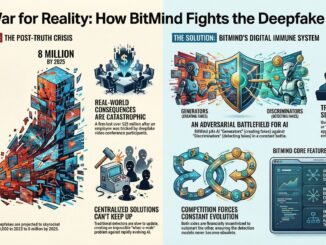
By: Victor
Since the dTAO update, the number of subnets on Bittensor has exploded to around 128. With this exponential growth, it’s essential to adopt a rigorous framework to evaluate a subnet’s quality and potential.
Several criteria can guide this analysis:
1. Project Fundamentals
- Founding team: A public, experienced team with backgrounds in AI, Web3, or reputable institutions is a strong signal. Subnets backed by solid entities (Macrocosmos, Rayon Labs, Inference Labs, etc.) have shown the ability to deliver quickly.
- Value proposition: The product or service should solve a real problem. Projects with a clear, easily understandable mission have an edge in gaining market attention (e.g., deepfake detection, 3D generation, distributed training…).
- Addressable market: Subnets targeting fast-growing verticals (compute, AI agents, AI x DePIN, healthcare, etc.) often show higher potential.
2. Narrative Attractiveness
In the post-dTAO environment, it’s no longer just technical validators allocating network resources, but the market itself. This means that storytelling, mindshare, and project clarity are just as critical as the technology—much like the rest of the crypto market.
- Clear narrative: Projects that can explain what they do in one sentence have a strong advantage.
- Presence on X and Discord: Active subnets that share updates, performance data, or integrations naturally attract more stakers.
- Design and UX: A well-designed dashboard, app, or even a visual can spark enthusiasm.
Examples: Chutes gained visibility from a single well-shared comparison visual, while Tensorplex saw its token price skyrocket after an investment announcement from CZ’s fund, even before the platform went live. Ridges AI flew because they clearly communicated the product they’re building and their successes.
3. Real Traction
If the goal of the network is to foster AI solutions with real-world usage, then user traction and monetization are fundamental indicators:
- Number of users/downloads (e.g., Dippy, 8M+ users)
- Revenue generated (e.g., Bitcast, just 18 days from launch to rev)
- Token utility within a clear economic model (buybacks, usage, etc.)
However, these criteria need nuance. Some projects like Metanova or Safescan are still in the research phase, and their value will become apparent over time. Their contribution to Bittensor lies more in advancing research than in immediate revenue.
4. Other Signals
Additional indicators can indirectly gauge a project’s credibility:
- Subnet mindshare within the community (tracked via tools like Swordscan).
- Support from recognized investors or validators (e.g., Yuma, DCG’s incubator branch; Crucible Labs, a top validator).
- Attention from major validators (OpenTensor, Mentat Minds…), helping identify trending subnets.
- Emission ranking (based on staker voting), which—if the market functions well—should favor the most promising subnets with higher staker interest and emissions.
For deeper insights, Bittensor’s Discord often offers more valuable information than Twitter or official websites.




Be the first to comment